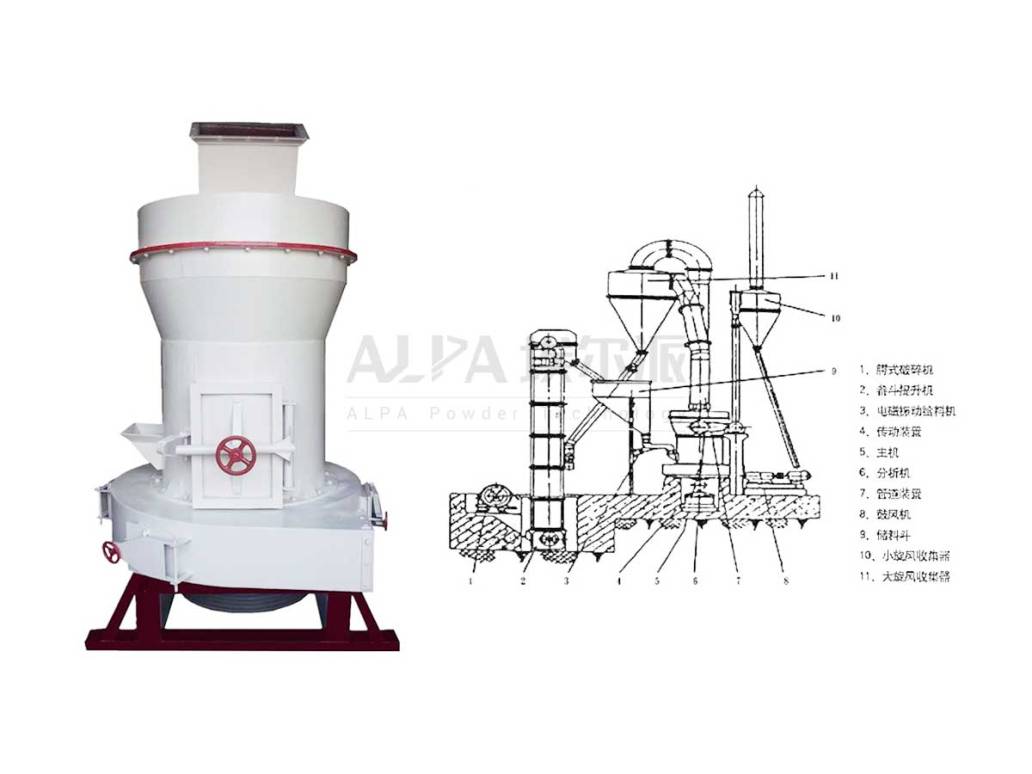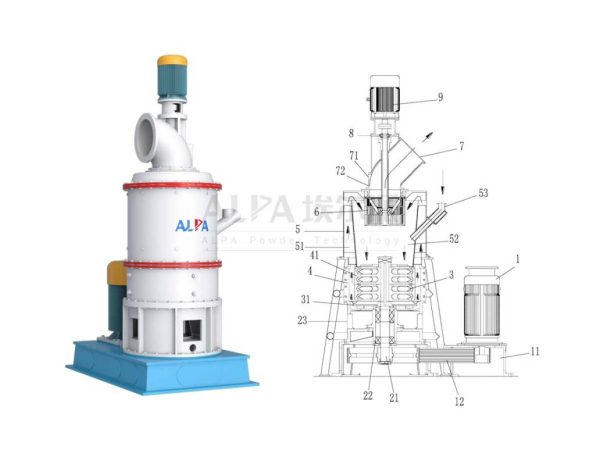The processing of ground calcium carbonate is simply the process of using crushing and grinding equipment to process calcium carbonate minerals into various powders that can meet the requirements of industrial applications. Because different industrial applications have different requirements on the particle size, shape, whiteness and particle size distribution of ground calcium carbonate powder, the processing technology of ground calcium carbonate should also comprehensively consider the process route and equipment selection according to the product positioning. Generally speaking, the design of grinding equipment is based on different principles: impact, extrusion, friction, shear and combination of various forces, etc. Different designs will have different grinding effects and product fineness.
The common processing equipment of ground calcium carbonate produced by large-scale dry process includes Raymond mill, Vertical mill, Ring roller mill and Ball mill. Due to the different crushing principle and discharging method of the equipment, the processed powder has great differences in grain type, particle size distribution and unit energy consumption, so the positioning of the product also has obvious differences.
The ball mill can cooperate with the air classifier to form a closed-circuit circulation system, after the grading of the coarse powder can be returned to the ball mill for re-grinding, and the Raymond mill, vertical mill, vibration mill due to the capacity of the mill is very limited, return difficult, unable to form a closed-circuit circulation system, to return to the treatment of problems.
The ball mill is also a low speed operating equipment, impact and friction energy consumption to minimize. Therefore, it is not only an ideal choice for grinding high hardness, abrasive mineral raw materials, but also the most economical choice for grinding white filler minerals such as low hardness calcium carbonate.




